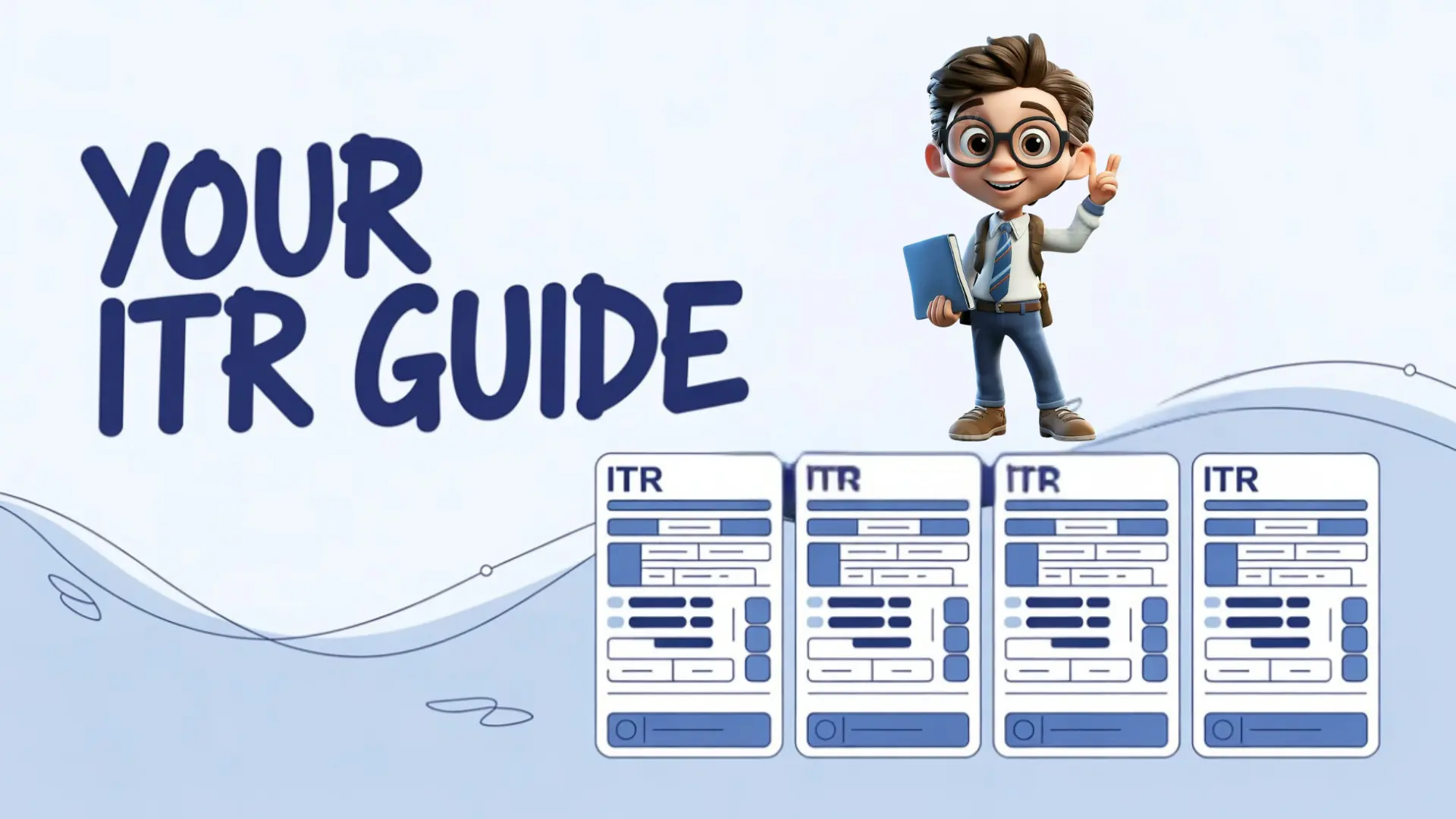Table of contents
- What is ITR (Income Tax Return)?
- Why is Filing ITR Important?
- Types of ITR Forms in India
- Quick Summary Table
- Frequently Asked Questions (FAQs)
- Final Thoughts
- References & Notes
What is ITR (Income Tax Return)?
An Income Tax Return (ITR) is a form in which taxpayers provide information about their income, expenses, investments, and taxes paid to the Income Tax Department of India. In simple words, it’s a report you submit every financial year that shows:
- How much you earned
- From where you earned (salary, business, rent, capital gains, etc.)
- How much tax you paid or still need to pay
The department uses this information to check if the correct tax was paid. If you paid more than required, you get a refund; if less, you need to pay the balance.
Why is Filing ITR Important?
Filing ITR matters for several reasons:
- Legal requirement: If your income is above the basic exemption limit, filing ITR is mandatory.
- Refund claim: Helps you get a refund if extra tax was deducted.
- Loan approval: Banks often ask for ITR copies before approving loans.
- Visa processing: Many embassies require ITR as proof of income.
- Avoid penalties: Filing late or not filing can attract fines under the Income Tax Act.

Types of ITR Forms in India
The Income Tax Department has different ITR forms depending on the nature of income and taxpayer category. Below we explain each one with simple examples.
ITR-1 (Sahaj)
Who can file? Resident individuals earning up to ₹50 lakhs with income from salary, one house property, and other sources (like interest).
Who cannot file? Those with business income, capital gains, or income from more than one house property.
ITR-2
Who can file? Individuals and HUFs with income from salary, more than one house property, capital gains, foreign income, or agricultural income above ₹5,000.
Who cannot file? Those with income from business or profession.
ITR-3
Who can file? Individuals and HUFs having income from business or profession.
ITR-4 (Sugam)
Who can file? Resident individuals, HUFs, and firms (other than LLP) who have opted for the Presumptive Taxation Scheme under sections 44AD, 44ADA, or 44AE. Total income should not exceed ₹50 lakhs.
ITR-5
Who can file? Firms, LLPs, AOPs, BOIs, and cooperative societies.
ITR-6
Who can file? Companies (except those claiming exemption under Section 11 for charitable or religious purposes).
ITR-7
Who can file? Trusts, NGOs, and institutions required to file returns under sections 139(4A), 139(4B), 139(4C), or 139(4D).
Quick Summary Table of ITR Types
| ITR Form | Eligible Taxpayers | Examples |
|---|---|---|
| ITR-1 (Sahaj) | Salaried individuals with income up to ₹50 lakhs | Salaried person with 1 house property |
| ITR-2 | Individuals/HUFs with capital gains, multiple house properties, or foreign income | Salaried person + capital gains from shares |
| ITR-3 | Individuals/HUFs with business/professional income | Doctor, lawyer, business owner |
| ITR-4 (Sugam) | Presumptive taxpayers (turnover ≤ ₹50 lakhs) | Small shopkeeper under presumptive tax |
| ITR-5 | Firms, LLPs, AOPs, BOIs, cooperative societies | Partnership firm |
| ITR-6 | Companies (except charitable trusts) | Private limited company |
| ITR-7 | Trusts, NGOs, institutions | Charitable trust |
Frequently Asked Questions (FAQs) on ITR
1. What happens if I file the wrong ITR form?
If you file the wrong form, the Income Tax Department may reject your return as "defective." You will need to correct and re-submit using the right form.
2. Is ITR filing mandatory if my income is below the taxable limit?
No, if your total income is below the basic exemption limit (₹2.5 lakh for individuals under 60) filing ITR is not mandatory. Still, it's good to file for loan/visa and refund records.
3. Can I file ITR after the due date?
Yes, you can file a belated return after the deadline, but there may be a penalty under Section 234F and loss of certain benefits like carrying forward losses.
4. Can I revise my ITR after filing?
Yes, you can file a revised return before the end of the relevant assessment year or before processing by the department, whichever is earlier.
5. Do I need to file ITR if tax is already deducted from my salary (TDS)?
Yes. Even if your employer deducted TDS, you still need to file ITR to report income and claim refunds if necessary.
6. Which ITR form should freelancers or gig workers file?
Freelancers and gig workers normally file ITR-3. If they opt for presumptive taxation under Section 44ADA, they may use ITR-4.
Final Thoughts
Filing your ITR is not just a legal formality; it's proof of financial responsibility. Choosing the correct ITR form helps avoid penalties and speeds up processes like loan approvals and visa checks. If unsure, consult a chartered accountant (CA) or tax expert.
References & Notes
This guide is for general information and does not replace professional tax advice. Tax rules and limits change — always confirm with the latest Income Tax notifications or consult a CA.

